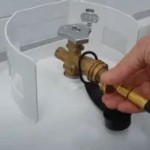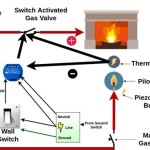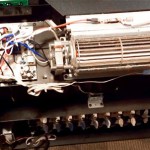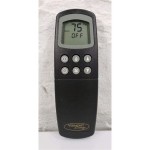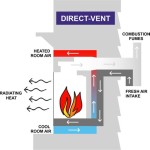Universal Remote for Gas Fireplace: Expanding Comfort and Control
Gas fireplaces offer a convenient and aesthetically pleasing alternative to traditional wood-burning fireplaces. They provide instant warmth and ambiance with minimal effort, eliminating the need for wood storage, chopping, and ash disposal. The integration of remote control technology further enhances this convenience, allowing users to adjust the flame height, turn the fireplace on and off, and even set timers from the comfort of their couch. While many gas fireplaces come equipped with a dedicated remote, a universal remote for gas fireplace systems offers a wider range of compatibility and features, potentially simplifying home entertainment setup and improving user experience.
A universal remote, in its essence, is a programmable device designed to control multiple electronic devices from various manufacturers. It achieves this by sending specific infrared (IR) or radio frequency (RF) signals that mimic the commands of the original remotes. The universality lies in the remote's ability to learn or be pre-programmed with the codes for a vast array of devices, including televisions, DVD players, sound systems, and, increasingly, gas fireplaces.
The advantages of using a universal remote for a gas fireplace extend beyond mere convenience. It consolidates multiple remotes into a single device, reducing clutter and simplifying operation, particularly for users with numerous electronic devices. It can also offer advanced features beyond the capabilities of the original fireplace remote, such as macro programming for automated sequences, custom button mapping, and control via smartphone apps or voice assistants.
However, successful integration of a universal remote with a gas fireplace requires careful consideration of compatibility, programming methods, and safety precautions. Understanding these aspects is crucial for ensuring proper and reliable operation of the fireplace and preventing potential hazards.
Understanding Gas Fireplace Remote Control Systems
Gas fireplace remote controls operate on either infrared (IR) or radio frequency (RF) signals. IR remotes require a direct line of sight between the remote and the fireplace receiver. Any obstruction between the two can disrupt the signal transmission, leading to inconsistent operation. RF remotes, on the other hand, do not require a direct line of sight and can operate through walls and other obstacles. This enhanced range and reliability make RF remotes a preferred choice for many users.
The fireplace receiver, typically located within the fireplace unit, interprets the signals from the remote and controls the gas valve, igniter, and other functions. The receiver is programmed to recognize specific codes associated with the remote. When a button is pressed on the remote, it sends a corresponding code to the receiver, which then activates the designated function.
Gas fireplaces use various control systems, ranging from simple on/off switches to more sophisticated systems with features such as flame height adjustment, thermostat control, and timer settings. The complexity of the control system determines the range of functions that can be controlled by the remote. Some advanced systems also incorporate safety features such as automatic shut-off mechanisms and child safety locks.
Understanding the specific control system used in a gas fireplace is essential for selecting a compatible universal remote. Not all universal remotes are compatible with all gas fireplace control systems. Consulting the fireplace manufacturer's documentation or contacting customer support is recommended to determine the compatibility requirements.
Furthermore, it's important to differentiate between millivolt and electronic ignition systems. Millivolt systems generate their own electrical current, powering the gas valve and ignition system. Universal remotes compatible with millivolt systems typically use a simple relay to interrupt the millivolt signal, turning the fireplace on or off. Electronic ignition systems, on the other hand, require an external power source and use an electronic control module to manage the ignition and gas flow. Universal remotes for electronic ignition systems need to be compatible with the specific electronic control module used in the fireplace.
Selecting a Compatible Universal Remote
Choosing the right universal remote for a gas fireplace involves several key considerations. The most crucial factor is compatibility. Verify that the universal remote is explicitly designed to control gas fireplaces or, at a minimum, supports the type of remote control protocol used by the fireplace (IR or RF) and the specific control system (millivolt or electronic ignition). Many universal remote manufacturers provide compatibility lists or online tools to help users determine if their remote is compatible with their fireplace model.
Consider the features offered by the universal remote. Evaluate if it provides the necessary level of control over the fireplace functions. Does it offer flame height adjustment, thermostat control, timer settings, or other features that are important to the user? Some advanced universal remotes also offer learning capabilities, allowing them to learn the codes from the original fireplace remote, even if the fireplace model is not pre-programmed in the remote's database.
Evaluate the ease of programming and use. A user-friendly interface and intuitive programming process are essential for a positive user experience. Look for universal remotes with clear instructions, well-labeled buttons, and a simple menu system. Some remotes offer online tutorials or customer support to assist with programming and troubleshooting.
Consider the range and reliability of the remote. An RF remote offers superior range and reliability compared to an IR remote, especially if the fireplace receiver is located behind furniture or other obstacles. Check the remote's specifications for its operating range and signal strength.
Finally, consider the overall quality and durability of the remote. Choose a remote from a reputable manufacturer with a proven track record of producing reliable and durable products. Read online reviews to get feedback from other users about the remote's performance and durability.
Programming and Using the Universal Remote Safely
Programming a universal remote for a gas fireplace typically involves one of two methods: code input or learning mode. Code input requires entering a specific code number that corresponds to the fireplace manufacturer and model. The code is usually found in the universal remote's user manual or online database. Learning mode involves pointing the original fireplace remote at the universal remote and pressing a button on both remotes. The universal remote then learns the IR or RF signal emitted by the original remote and stores it in its memory.
Regardless of the programming method used, it is crucial to follow the instructions provided in the universal remote's user manual carefully. Incorrect programming can lead to malfunction, damage to the fireplace, or even potential safety hazards. Test the programmed remote thoroughly to ensure that all functions are working correctly. Verify that the remote can turn the fireplace on and off, adjust the flame height, and control any other features that are supported by the fireplace.
Safety is paramount when using any remote control device with a gas fireplace. Never leave the fireplace unattended while it is operating. Ensure that the remote is stored in a safe place, out of reach of children and pets. Regularly check the batteries in the remote and replace them when necessary. Weak batteries can cause erratic behavior or prevent the remote from functioning properly.
If the universal remote malfunctions or exhibits unusual behavior, immediately stop using it and disconnect the power supply to the fireplace. Contact a qualified technician to inspect the fireplace and remote for any potential problems. Do not attempt to repair the remote or fireplace yourself unless you are a qualified technician.
It is also important to understand the limitations of the universal remote. While a universal remote can control many functions of a gas fireplace, it may not be able to control all functions. Some advanced features, such as diagnostic codes or advanced safety settings, may only be accessible through the original fireplace remote or a dedicated service tool.
Furthermore, ensure that the universal remote complies with all applicable safety standards and regulations. Look for certifications from reputable testing organizations, such as UL or ETL. These certifications indicate that the remote has been tested and found to meet established safety requirements.
In conclusion, while a universal remote can provide enhanced convenience and control over a gas fireplace, it is essential to select a compatible remote, program it correctly, and use it safely. By following these guidelines, users can enjoy the benefits of a universal remote without compromising safety or performance.

Gas Fireplace Remotes More Fireplaceremotecontrols Com

Gas Fireplace Remote Control Guide Fireplaces Direct Learning Center

Fireplace Remote Controls For Natural Gas Or Electric Fireplaces

Skytech Universal Gas Fireplace Remote Control Kit Decked Out Home And Patio

Gas Fireplace Remote Control Guide Fireplaces Direct Learning Center

Robertshaw S 55644

Ac05568 My Fireplace S

Flameworks On Off Gas Fireplace Remote With Timer Fire Parts Ca

Flameworks On Off Gas Fireplace Remote With Timer Fire Parts Ca

55644 Robertshaw Universal Automatic Fireplace Remote Control Kit With Temperature Settings Amre Supply
Related Posts


